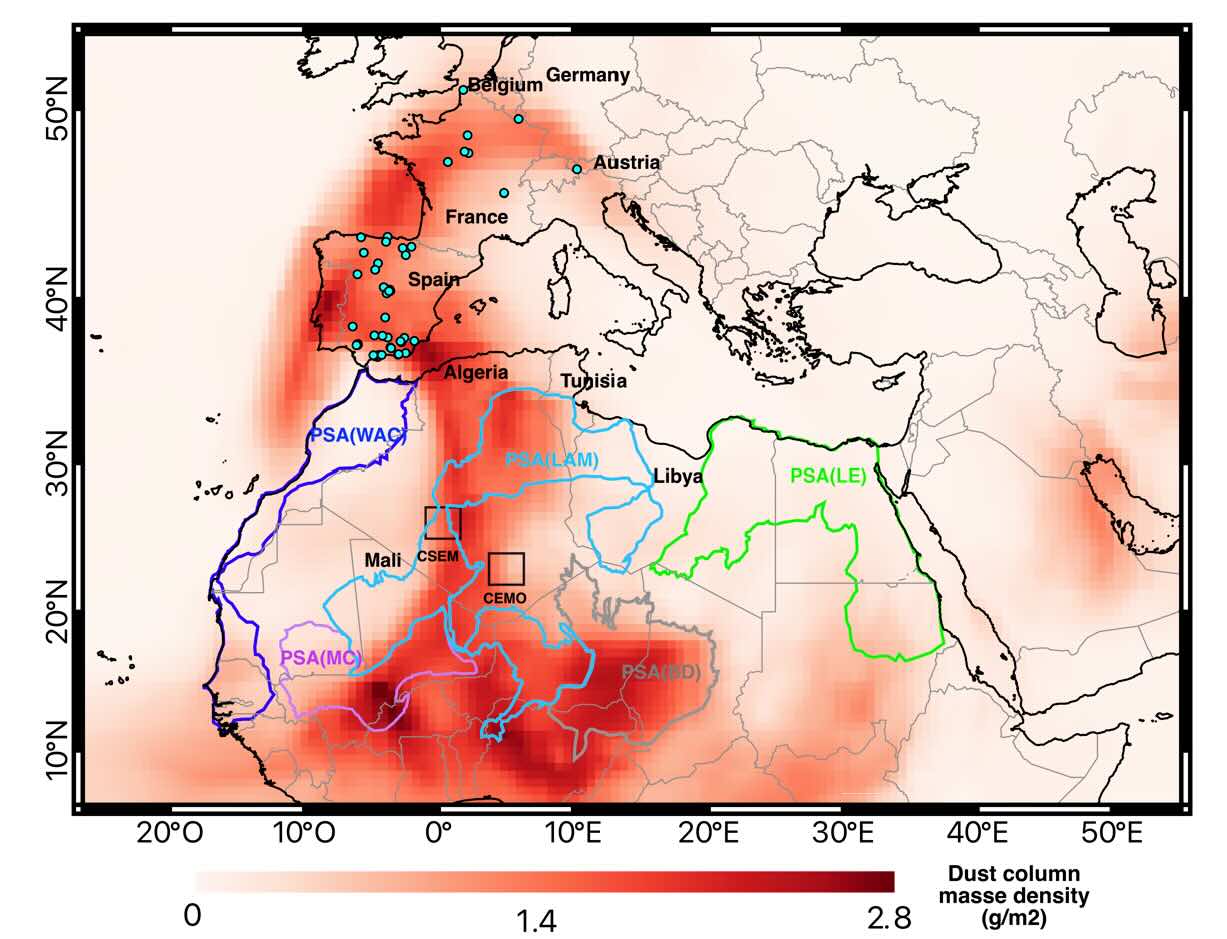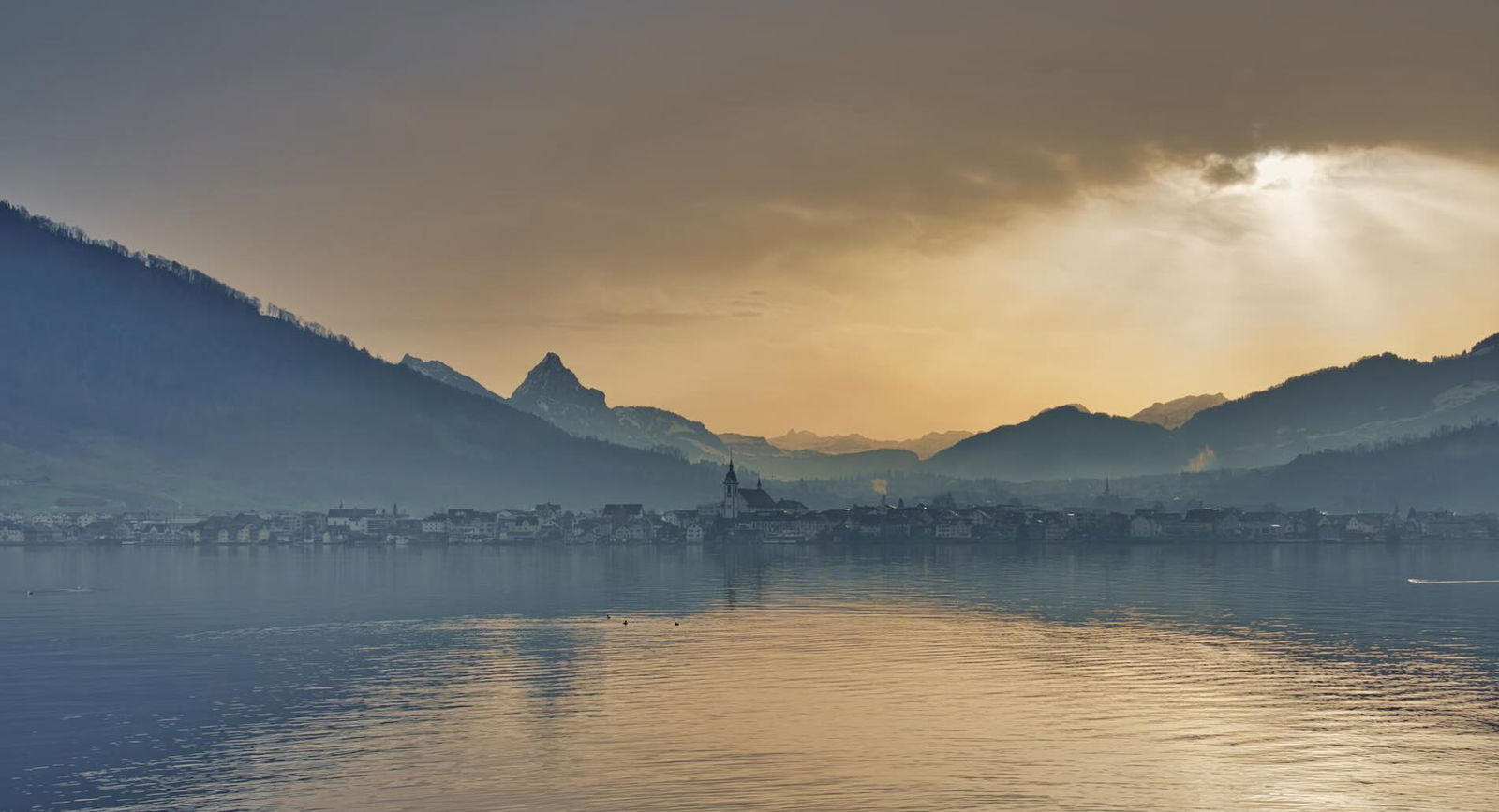Radioactive dust left over from Cold War-era nuclear tests is still lingering in European air, according to new international research.
As the world’s largest hot desert, the Sahara is the planet’s most significant source of windborne mineral dust. Its particles travel vast distances, typically westward to the Americas or northward to Europe, though occasionally reaching as far as Japan. While the dust contains beneficial minerals, including iron, increasingly severe dust storms—and their potential health risks—are raising concerns.
Between 2020 and 2024, Saharan dust storms intensified, possibly due to shifting atmospheric patterns linked to climate change. Europeans may have admired the striking sunset hues produced by iron-rich dust in the atmosphere, but the phenomenon had more troubling consequences.
In the Canary Islands, which lie much closer to the Sahara, residents faced dangerously high concentrations of airborne particles known to cause respiratory and skin problems. Even more alarmingly, when Saharan dust blanketed Europe following a major event in March 2022, scientists discovered it contained radioactive elements, prompting an unexpected investigation.
French Nuclear Tests in Algeria
Only a few nations directly possess nuclear weapons, and France is among them. In February 1960, the country conducted its first atomic test near the town of Reggane in the Tanezrouft region of the Sahara Desert, continuing a series of tests until April 1961. At the time, Algeria remained under French rule, gaining independence the following year. However, even after Algeria became an independent nation, France carried out additional above-ground nuclear tests in 1962 and continued underground testing until 1967.
Beyond the direct impacts of nuclear detonations, France also buried radioactive waste in the surrounding desert sands. By the 1970s, reports emerged of severe health effects among local populations, though it took until the 1990s for the full extent of these consequences to gain international attention. The French Ministry of Defense estimates that 27,000 Algerians were affected by the tests, though independent assessments suggest the number may be closer to 60,000.
Investigating Europe’s Radioactive Dust
Given the location of the 2022 Saharan dust event, scientists initially suspected that French nuclear testing near Reggane was the source of the radioactive particles detected in Europe. To test this hypothesis, Yangjunjie Xu-Yang of the Laboratoire des Sciences du Climat et de l’Environnement led an extensive study, employing isotopic analysis and satellite tracking.
Citizen scientists from Belgium, Spain, France, and Germany participated in the research, collecting 110 samples of dust deposited across Europe. Xu-Yang’s team selected the 53 highest-quality samples for analysis, yielding surprising results.


The isotopes in the dust did not match the signature of French nuclear tests. Instead, they pointed to a different origin—Cold War-era nuclear detonations conducted by the United States and the Soviet Union. Each atomic bomb test leaves behind a unique radioactive “fingerprint,” and when researchers compared the isotope ratios, they found they were inconsistent with French nuclear weapons.
The samples showed a median isotope ratio of 0.187, a value characteristic of U.S. or Soviet nuclear tests, far exceeding the 0.07 ratio typically associated with French explosions. Satellite data confirmed that the dust originated in the Reggane region, but its radioactive signature revealed a more complex global legacy of nuclear fallout.
While the study highlights the long-lasting environmental impact of nuclear testing, researchers found that the overall level of radioactivity in the dust remained low. When measured against European Union (EU) nuclear safety standards, the detected levels posed only a minimal public health risk.
The paper “Radioactive Contamination Transported to Western Europe with Saharan Dust” appeared on January 31, 2025 in Science Advances.
Ryan Whalen covers science and technology for The Debrief. He holds an MA in History and a Master of Library and Information Science with a certificate in Data Science. He can be contacted at ryan@thedebrief.org, and follow him on Twitter @mdntwvlf.

